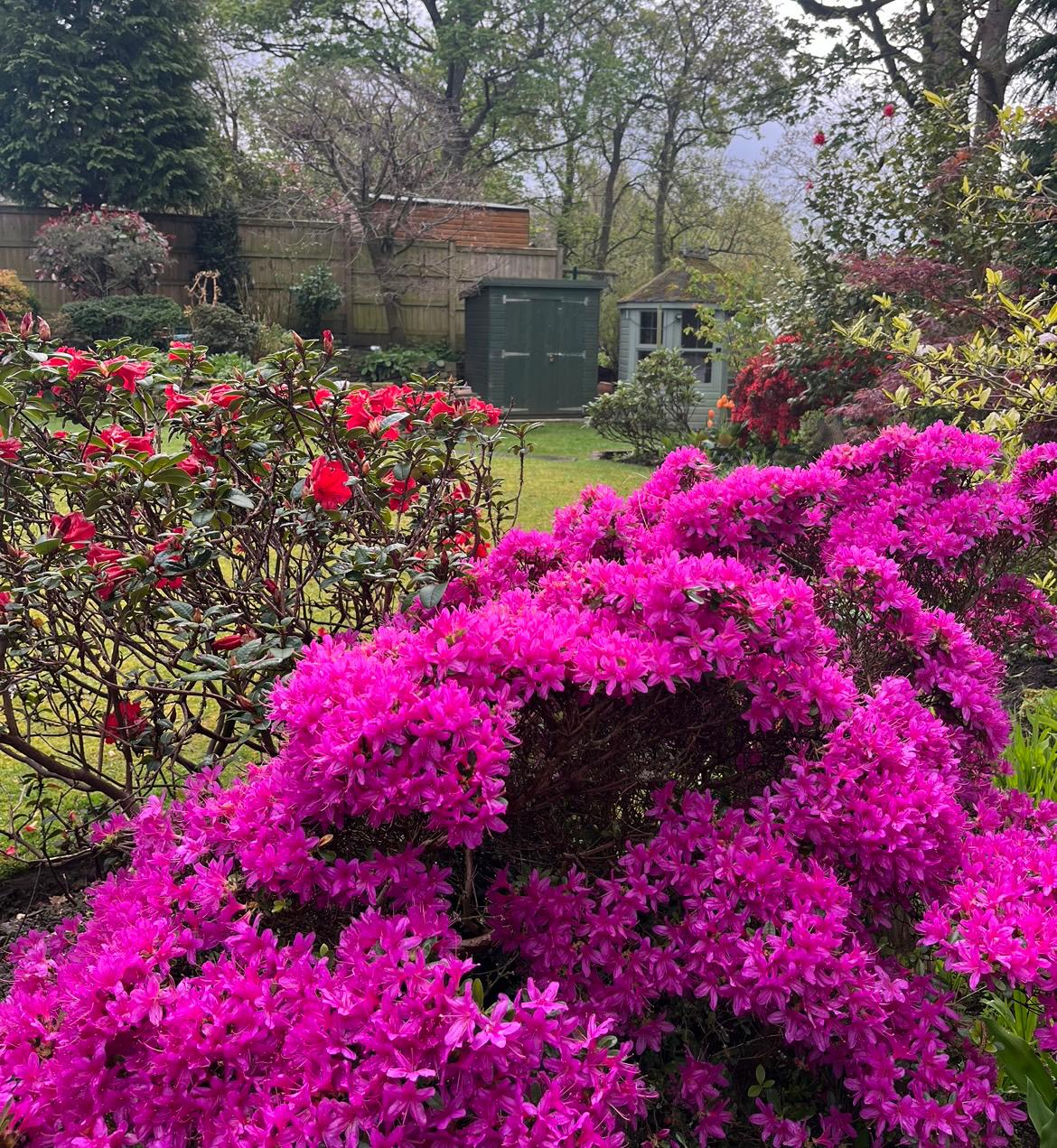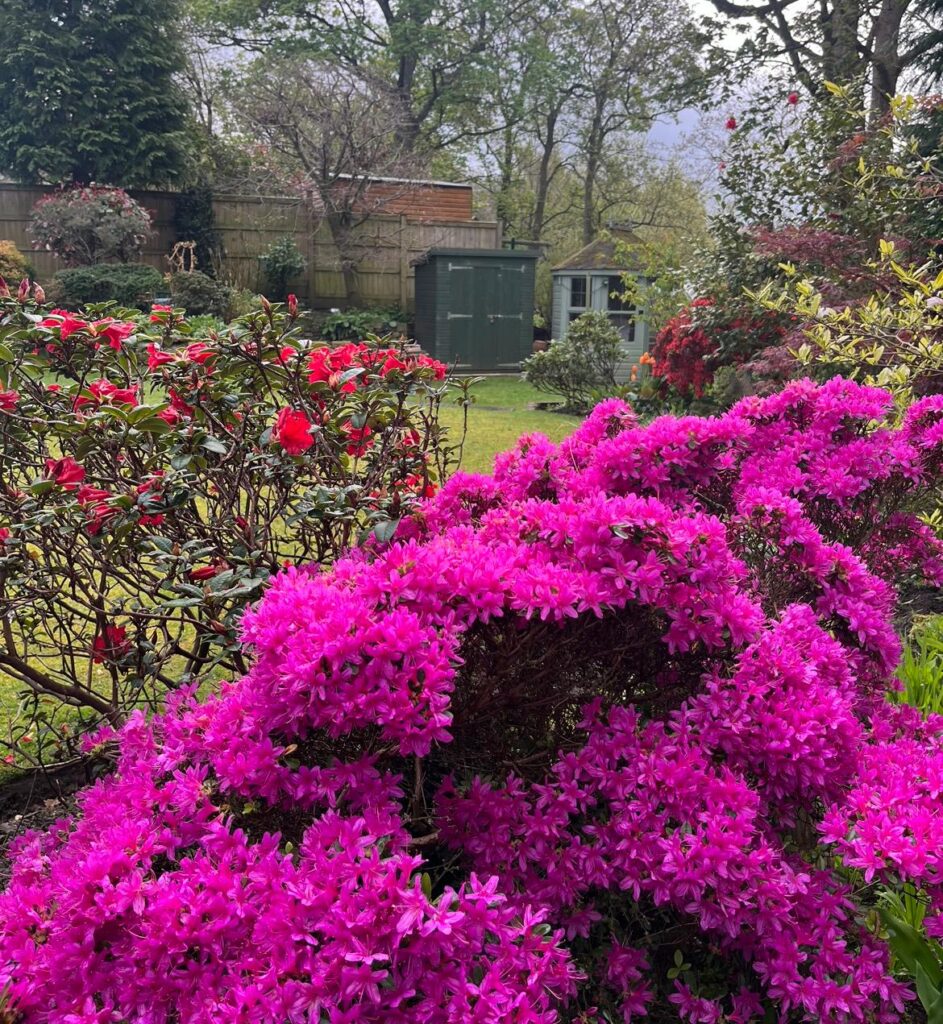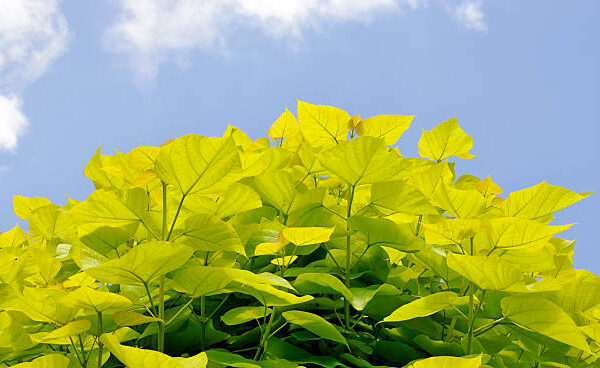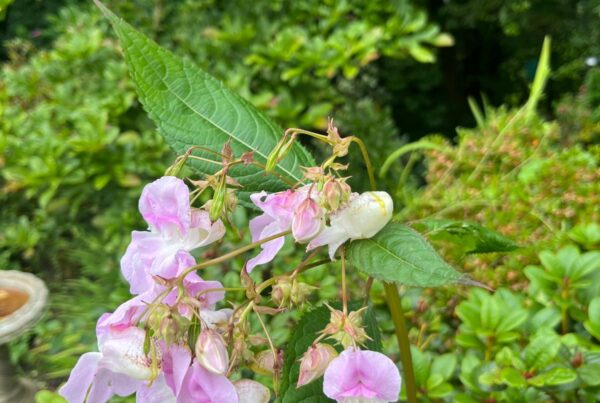Azaleas are one of those plants that look great but can be really bad for your health, just not in the obvious way that a thorny rose bush is.
Azaleas are part of the Rhododendron family, and all of those have a specific chemical in them called ‘Grayanotoxins’ that is not good for humans, pets, or any animal.
The only wildlife that can tolerate it is bees and that’s because they don’t eat it. They harvest the nectar. The nectar from all plants in the Rhododendron family contains these grayanotoxins.
That’s a neurotoxin and in high enough doses, it can be lethal.
How Toxic are Azaleas?
All parts of the azalea plant are poisonous, however, adults are unlikely to be munching down on the leaves from azalea bushes in a fresh leaf salad.
Where the danger comes in is from the honey produced from the nectar that bees collect from azaleas and its bigger version, the rhododendron.
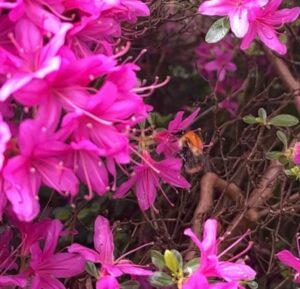
A picture I taken of a bee gathering nectar from an azalea (excuse the poor quality)
The nectar is used to make “mad honey” and too much of that can lead to “mad honey disease”. That’s the easier way to say “Grayanotoxin poisoning”.
What is Mad Honey?
Mad honey is also referred to as Himalayan Wild Honey.
It’s marketed as a speciality medicinal honey, usually imported from Turkey or Nepal where these plants are cultivated and harvested for medicinal purposes.
It is legal to buy mad honey in Britain and that’s where the danger comes in.
For adults, it can have an intoxicating effect. It’s a psychedelic. The real danger is if kid’s get a hold of it because the body of an adult can break down some of the toxins to non-lethal levels.
Kid’s haven’t fully developed so the toxins are going to have a more extreme effect, likely requiring medical treatment to cleanse the body of the toxins.
If, for whatever reason, you feel a crazy need to experiment with mad honey, keep it well out of reach of children, and pets!
Educating Kids that Azaleas are Not Edible
Kids, particularly those in rural communities where there are a lot more wildflowers, they may be more susceptible to eating parts of plants, especially if their parents grow edibles like tomatoes, potatoes, onions, and herbs. Plants like honeysuckle can be picked and the nectar sucked from the flower. Do that with the flower on an azalea, they’ll be ill!
For families taking trips foraging in the forest, be sure to teach your kids how to identify what plants are edible and if unsure, leave it alone. Don’t risk tasting plants that you don’t know what they are.
Toxicity of Azaleas in Pets and Wildlife
The only wildlife safe from the effects of the chemicals in azaleas are bees. They don’t eat it. They collect it. To wildlife, and specifically, pets and cattle, the effects can be lethal.
What’s known is that animals tend to avoid it when they can. Of the times horses, goats, and similar grazing cattle consume azaleas, it’s usually in the winter when other food sources are scarce.
For that reason, if there are azaleas growing where animals are, plenty of food and water should be available at all times. Don’t leave them a reason to graze on plants that can be toxic.
Likewise, if you’re out in the countryside walking your dog and you know there’s wild azalea bushes or someone has one growing in their garden, pay closer attention to what your dog is sniffing.
If they do eat a leaf from an azalea, or worse, a flower bud with the nectar, the symptoms of poisoning can happen fast.
Drooling, diarrhoea, vomiting, lethargy, walking at a slower pace, and showing general signs of weakness.
How Azalea Poisoning is Treated
Depending on the severity of the toxicity, kids or adults may need emergency treatment.
Same for pets, and livestock.
Typically, activated charcoal is used to absorb some of the toxins.
In severe cases of dehydration and the inability to consume food, an IV may need to be administered. For cattle, livestock and horses, where there’s a higher risk of heart problems, anti-arrhythmic medications may need administering.
The Science Behind the Toxicity of Azaleas
The main chemical responsible for the dangers of azaleas is grayanotoxin, and andromedotoxin, which, according to the University of Bristol, have similar components to turpentine. Most of us know that we can’t drink turpentine and why.
Consuming any part of an azalea plant can cause a burning sensation in the mouth.
That’s usually enough of a deterrent to stop eating it or sucking the nectar from the flower.
In small quantities, it’ll cause a stomach upset, can lower blood pressure and make you feel nauseous.
The clinical symptoms present within 20 minutes to 6 hours after consumption.
In higher quantities, such as when cattle and livestock continually graze on the leaves of azaleas, it can lead to a loss of coordination, muscle weakness, and death in farm animals.
Usually in the winter, when food becomes scarce such as during periods of heavy snow, the branches bend, lowering the leaves of azaleas and rhodendrons to within reach of animals.
Symptoms of poisoning in sheep include “drooling, vomiting, pain and distress. They stagger and collapse before dying”.
Advice on Finding Plants That Are Safe for Your Family and/or Animals
In the family garden where kids and/or pets are roaming free, it’s far safer to plant non-toxic plants than it is to constantly supervise.
It’s easier to find a list of safe plants than it is to identify poisonous plants because there’s more that are toxic than there are that are safe.
One of the largest documents I’ve seen listing plants that are toxic to dogs is from healthy-pets.co.uk. That’s here. You can also check on the ASPCA website to see what plants would be safe around pets.
For parents with kids with a fascination for foraging, the Woodlands Trust offer a range of advice about staying safe and identifying edible plants.
For cat parents, Cat Protection has information on safe plants to keep around cats and to recognise the symptoms of any poisoning.
Use this if cats frequent your garden too to avoid any mishaps with neighbours cats.
For those with horses, the British Horse Society has information on plants that are poisonous to them.
For plants to have that are safe around cattle and livestock, The National Animal Disease Information Service (NADIS) has information on plants to avoid like Yew, Bracken, and water dropwort and how to recognise the symptoms of poisoning.
For those living in rural areas with a garden backing onto a field belonging to a farmer, consider the cattle that roam the fields and plant only safe plants near the fence line.
Azaleas are poisonous to humans and animals and while gorgeous to look at, they’re not a good plant to have when there’s a risk of any part of the plant being consumed.
If you would like to know more about Azaleas, here is an article I’ve written!

